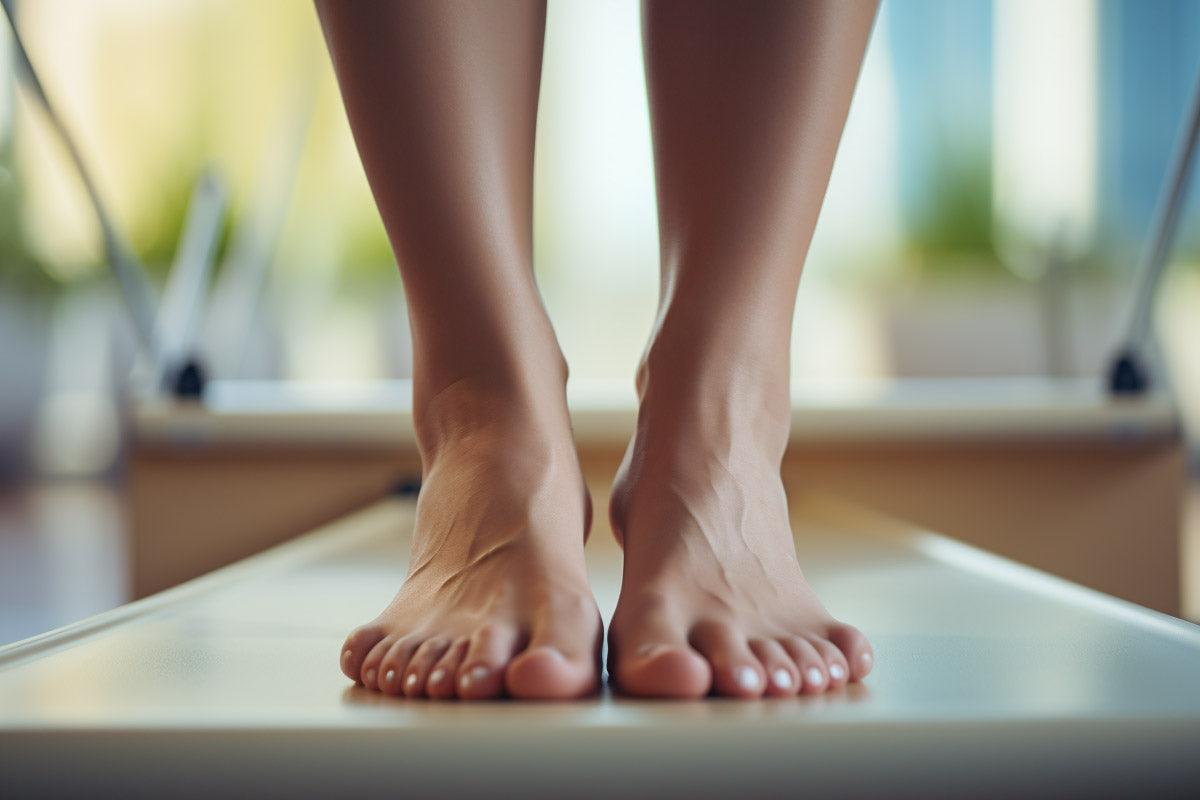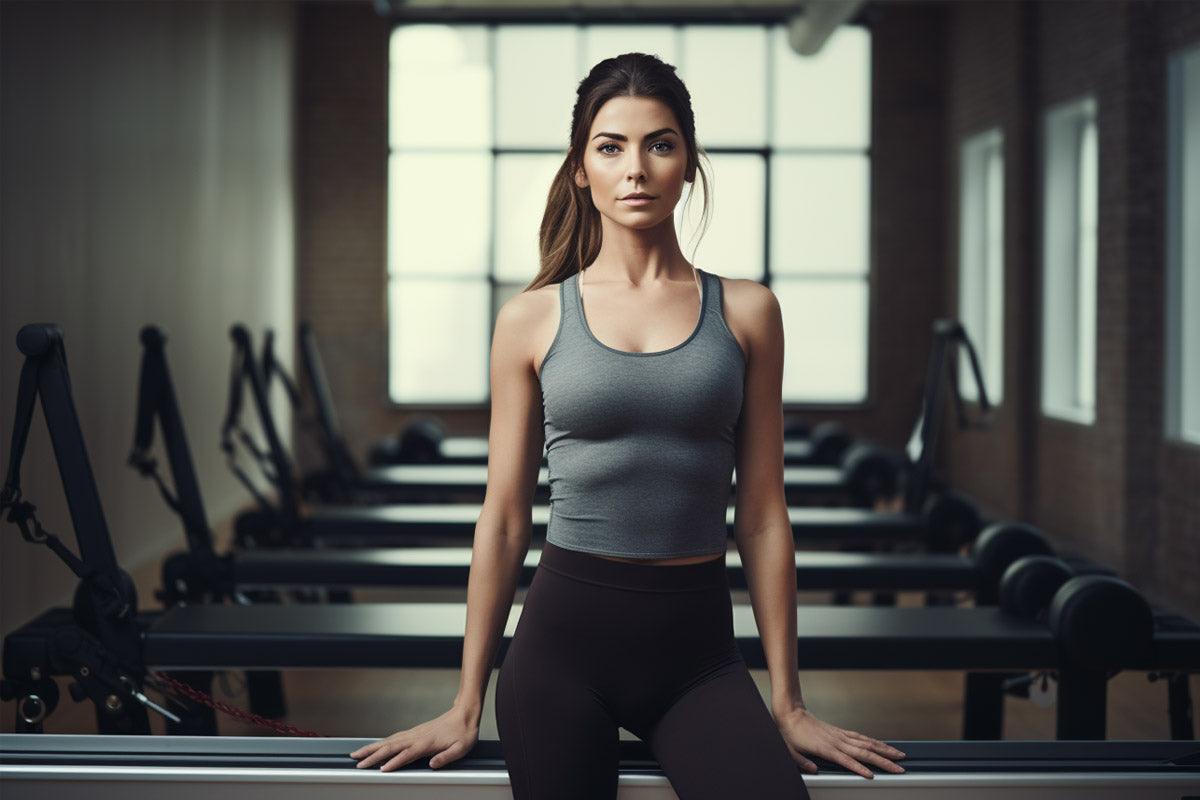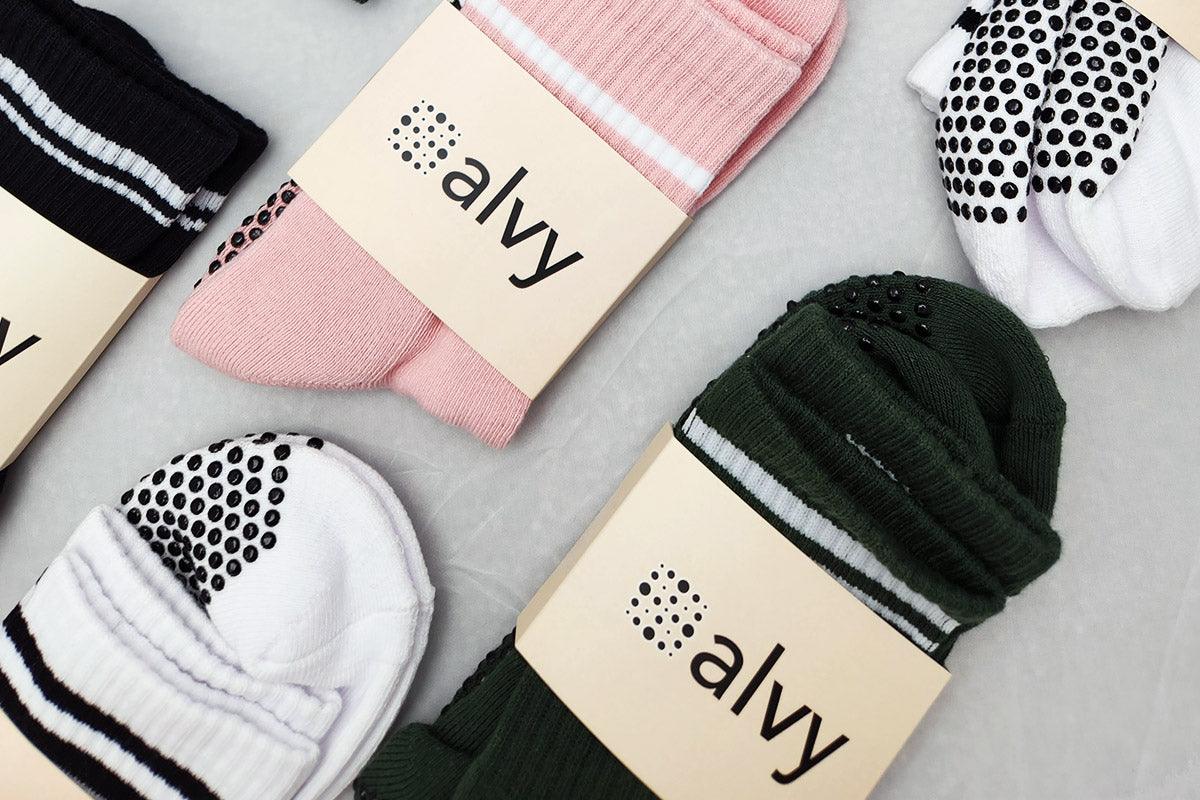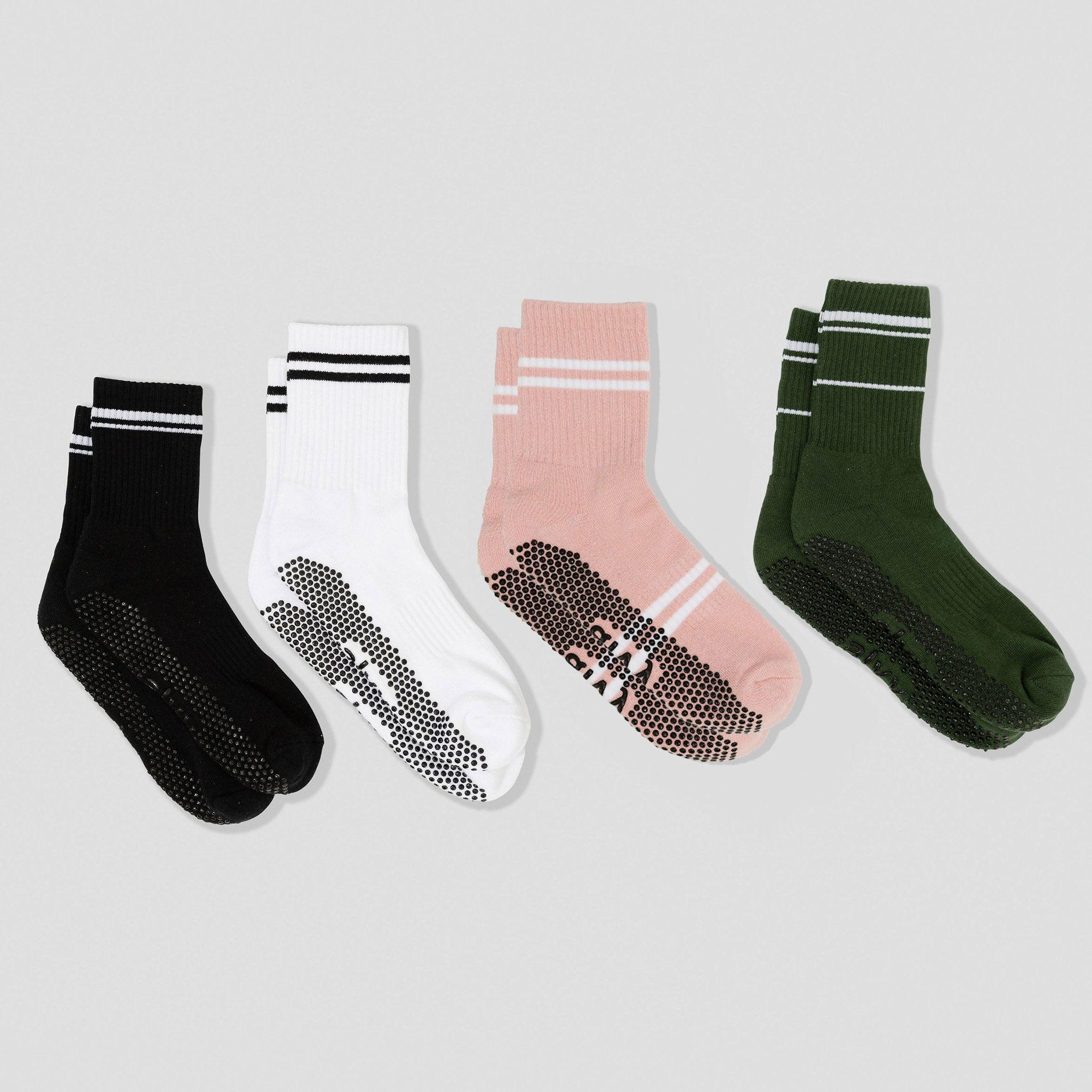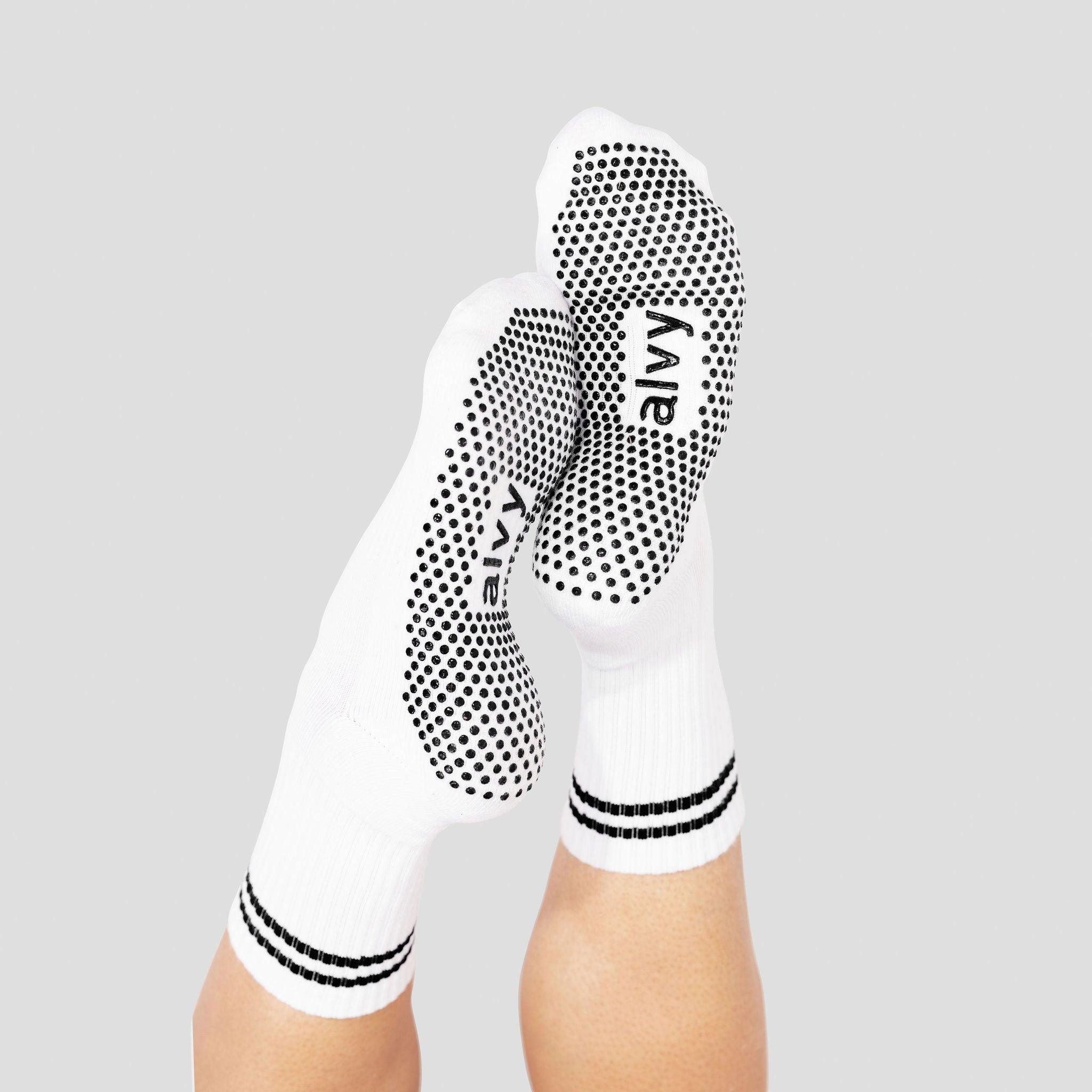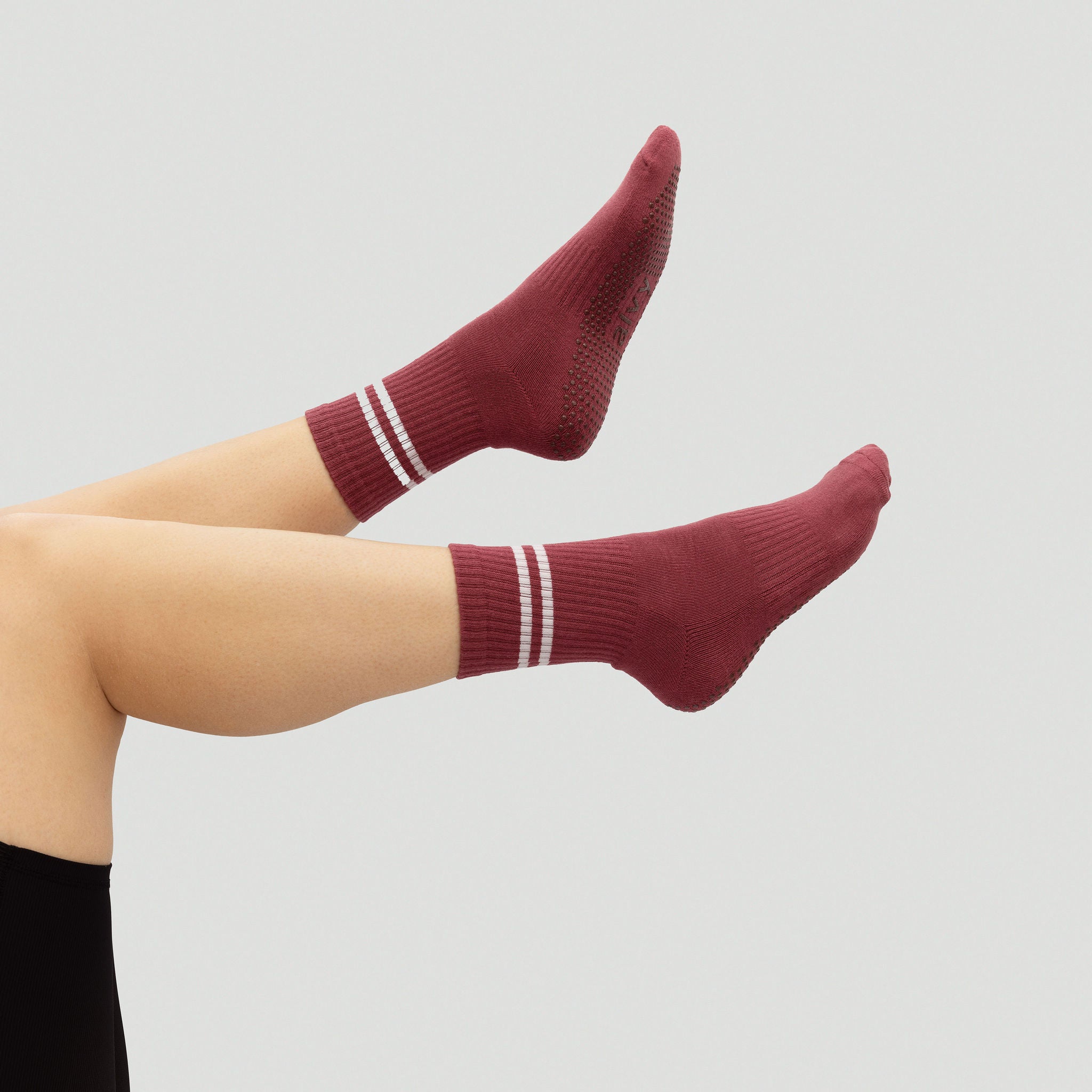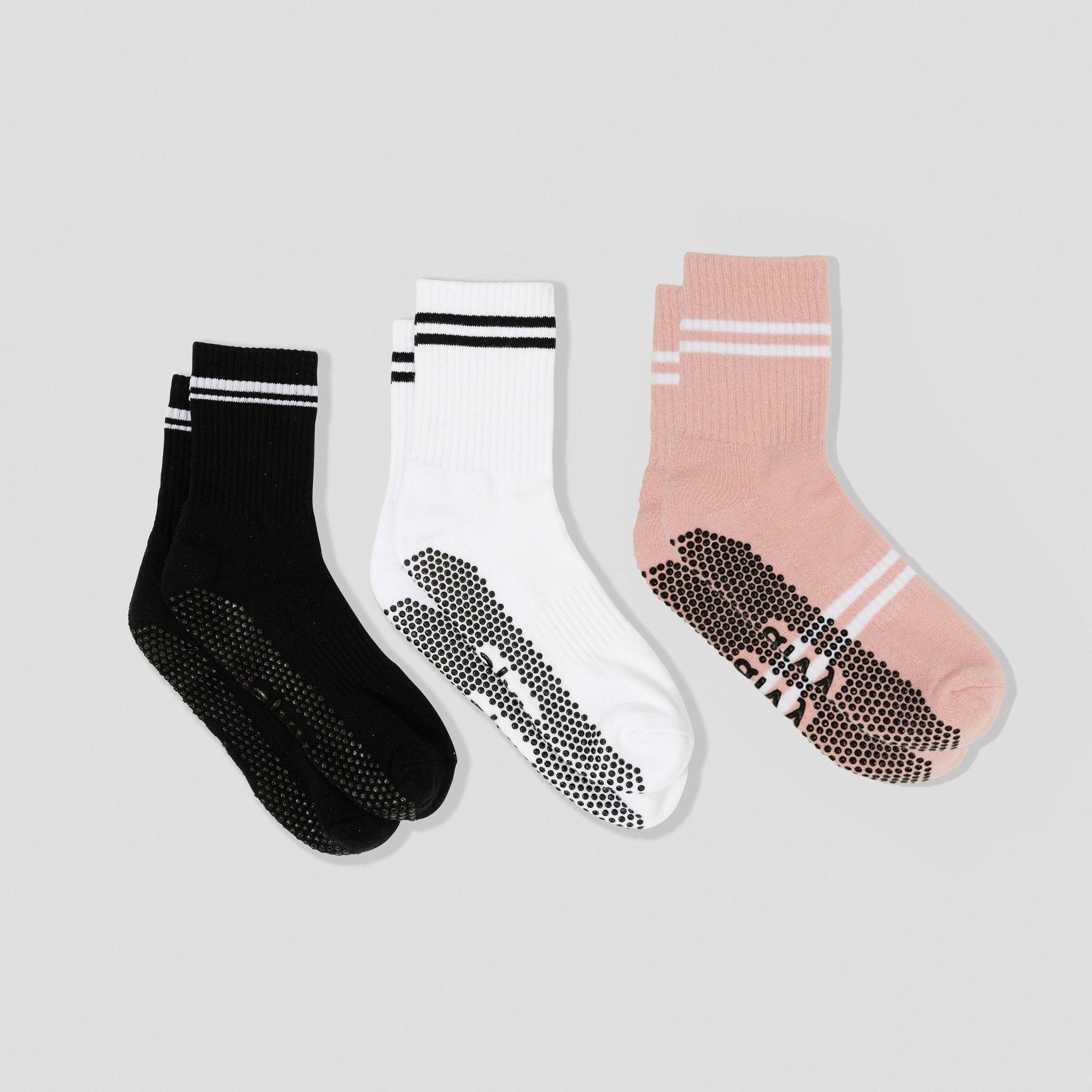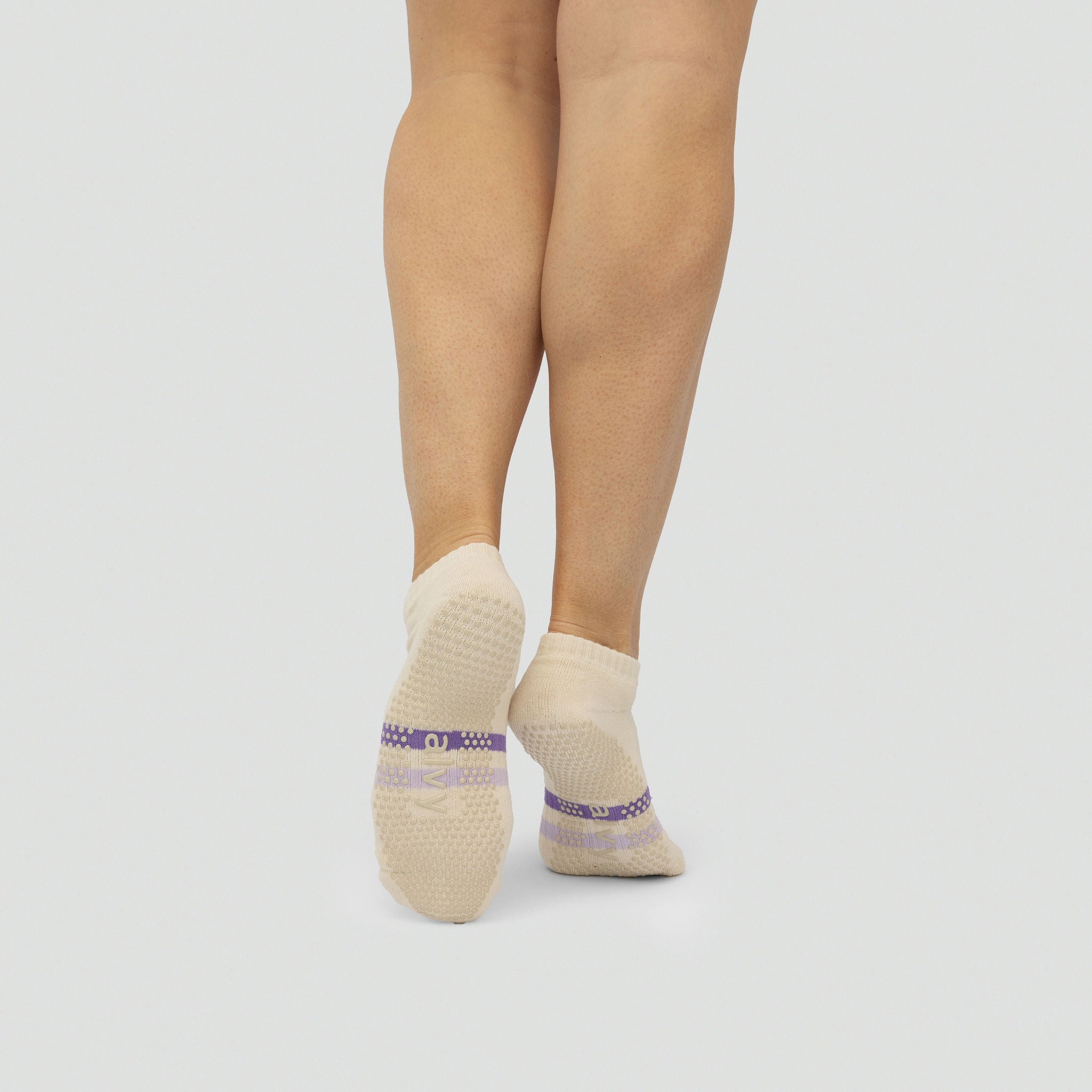Non-slip grip socks have been trending in recent years according to Google Trends, especially among Pilates, yoga, and even dancers. One of the main reasons for their popularity is their ability to prevent blisters. Blisters are a common problem for anyone who engages in physical activity, especially if they wear ill-fitting shoes or socks that slide and rub against the skin. We will explore the question of whether grip socks will stop blisters and provide you with some tips on selecting and using them effectively.
Key Takeaways
- Grip socks reduce friction between the foot and the inside of the shoe.
- The effectiveness of grip socks in preventing blisters depends on several factors, including the type of activity you are engaged in, the fit of your shoes, and the quality of the socks themselves.
- In addition to wearing grip socks, you should also take steps to keep your skin healthy and hydrated to prevent blisters.
Grip Socks: Do They Prevent Blisters?
The short answer is that grip socks can help prevent blisters, but they are not a guarantee. Blisters are caused by friction between your skin and your socks or shoes. The anti-slip material on the sole of grip socks can reduce the amount of friction between your foot and your sock, which can help prevent blisters from forming.
However, it's important to note that not all grip socks are created equal. Some grip socks are made with better materials and have better grip than others. For instance, our grip socks are made from high-quality performance materials that provide better grip and durability than cheaper grip socks you will find on Amazon Australia, Kmart, or Target.
Benefits of Grip Socks In Preventing Blisters
If you're into Pilates or yoga, you know how painful blisters can be. Fortunately, grip socks can help prevent blisters and keep your feet comfortable and healthy. Here are the reasons why you should consider picking up a pair of our crew or low-rise grip socks:
- Friction Reduction. When your foot rubs against your shoe or sock, it creates heat and pressure that can cause blisters to form. Grip socks are designed to reduce friction by creating a non-slip surface between your foot and your shoe. This can help prevent blisters from forming, especially during long periods of activity.
- Moisture Management. Blisters can also be facilitated by moisture. Sweating can produce a moist environment on your feet that can weaken the skin and increase the risk of blisters. Moisture-wicking materials are frequently used to make grip socks, which assist in keeping your feet comfortable and dry (and lessen the chance that moisture-related blisters will develop).
How To Use Grip Socks To Avoid Blisters
Wearing grip socks properly is the key to preventing blisters and getting the most out of them. When putting on your grip socks, make sure they fit snugly to your feet but not too tight that they restrict blood flow. Wearing socks that are too tight can cause blisters due to friction and pressure.
In addition, taking care of your grip socks will not only extend their lifespan but will also ensure that they continue to provide optimal performance. Here are some tips to keep in mind:
- Wash your grip socks after each use to remove any sweat or dirt that may have accumulated. Use a mild detergent and avoid using fabric softeners as they can reduce the grip of the socks.
- Air dry your grip socks. Avoid using a dryer as high heat can damage the non-slip sole.
- Store your grip socks in a cool, dry place away from direct sunlight.
Additional Blister Prevention Strategies
There are a few other tactics you can employ in addition to wearing grip socks to help avoid blisters. These include wearing the proper footwear and practicing good foot hygiene.
- Keeping your feet clean and dry. Make sure you wash your feet daily with soap and water and dry them thoroughly, paying special attention to the areas between your toes. If your feet tend to sweat excessively, consider using an antiperspirant spray or powder to help keep them dry.
- Wearing appropriate footwear. Make sure your shoes fit properly and provide enough room for your toes to move freely. Avoid wearing shoes that are too tight or too loose, as they can cause friction and rubbing against your skin, leading to blisters.
- Wearing moisture-wicking grip socks. Better non-slip Pilates socks are constructed of synthetic or woolen fibres, which keep your feet dry and lessen the chance of blisters. Socks made entirely of cotton should not be worn since they have a tendency to absorb moisture and cause more rubbing and friction.
Frequently Asked Questions
Can wearing full-length grip socks reduce the risk of blisters on the big toe?
Yes, wearing full-length grip socks can reduce the risk of blisters on the big toe. Grip socks are designed to provide extra traction on slippery surfaces and prevent slips and falls. They also have moisture management properties that can wick away sweat, ensuring your feet remain dry. Moist feet are more susceptible to blisters, and with grip socks, this issue is tackled head-on.
How do grip socks compare to ENGO Blister Patches?
ENGO Blister Patches are designed to reduce friction and prevent blisters. They are applied directly to the shoe, not the foot, and can last for several weeks. Grip socks, on the other hand, are worn on the foot and provide extra traction on slippery surfaces. Both grip socks and ENGO Blister Patches can be effective in preventing blisters, but they work in different ways.
Related:

